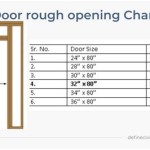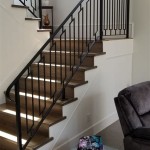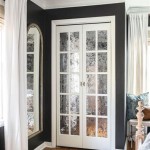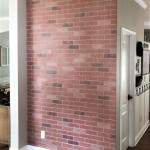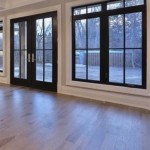How To Determine Your Interior Design Style
Determining an interior design style is a fundamental step in creating a personalized and aesthetically pleasing living space. It involves a thorough understanding of one's preferences, lifestyle, and the architectural characteristics of the home. A well-defined design style provides a cohesive framework for making informed decisions about furniture, color palettes, textures, and decorative accessories.
The process of identifying a preferred interior design style can be challenging due to the vast array of options available. These range from traditional and classic aesthetics to modern and contemporary expressions, with numerous sub-categories and hybrid styles in between. By systematically exploring various design elements and influences, individuals can pinpoint the style that best reflects their personal tastes and functional requirements.
1. Self-Reflection and Inspiration Gathering
The initial phase of determining an interior design style requires introspection and a conscious effort to identify personal preferences and lifestyle needs. This involves considering factors such as existing possessions, hobbies, and typical daily routines. A home should not only be visually appealing but also functional and conducive to the activities that take place within it.
Begin by contemplating current preferences. What colors are particularly appealing? Are there recurring patterns or textures that consistently draw attention? Consider existing furniture pieces and decorative items. Are there any common threads in their style or material? What emotional responses are evoked by different spaces? Identifying these preferences provides a foundational understanding of individual tastes.
Next, consider lifestyle requirements. Is the space primarily used for relaxation, entertainment, or work? Does it need to be child-friendly or pet-friendly? Are there specific accessibility needs to consider? Understanding how the space will be used is crucial for selecting a design style that supports the intended activities.
Gathering inspiration is a vital component of this initial phase. This can be accomplished through various channels, including interior design magazines, online platforms like Pinterest and Houzz, and visits to showrooms and model homes. When browsing these sources, pay attention not only to complete rooms but also to individual elements such as furniture styles, color schemes, and lighting fixtures. Save images and create a mood board that reflects the aesthetics that are most appealing. Note any recurring themes or elements that emerge from these collected images.
Analyze the collected inspiration. Identify the common elements that resonate most strongly. Are there specific color palettes, furniture styles, or architectural details that appear repeatedly? This analysis will help to narrow down the range of potential design styles. Consider aspects of design that are not preferred. Actively identifying disliked elements can be equally valuable in refining personal preferences.
2. Exploring Different Interior Design Styles
Once a foundation of personal preferences and inspirational imagery is established, it is essential to delve into the characteristics of various interior design styles. This exploration will provide a more comprehensive understanding of the options available and facilitate a more informed decision-making process. Each style possesses distinct features that contribute to its overall aesthetic and functionality.
Traditional Style: This style is characterized by its emphasis on classic elegance, formality, and historical references. It typically incorporates rich colors, ornate details, and symmetrical arrangements. Furniture is often made of dark wood and upholstered in luxurious fabrics such as velvet and silk. Architectural details such as crown molding and wainscoting are common.
Modern Style: This style emphasizes clean lines, simplicity, and functionality. It eschews ornamentation in favor of minimalist forms and open spaces. Color palettes are often neutral with pops of bold color. Materials such as glass, steel, and concrete are frequently used. Furniture is typically sleek and uncluttered.
Contemporary Style: Often confused with modern style, contemporary design is more fluid and reflects the current trends. It embraces both natural and synthetic materials, often incorporating sustainable elements. Colors can range from neutral to bold, and textures are frequently used to add visual interest. Furniture is typically comfortable and functional with a focus on ergonomic design.
Bohemian Style: This style celebrates individuality, eclecticism, and a relaxed, free-spirited aesthetic. It incorporates a mix of textures, patterns, and colors, often drawing inspiration from different cultures and eras. Vintage and repurposed items are common, as are plants and natural elements. Furniture is typically comfortable and inviting, with a focus on creating a cozy and relaxed atmosphere.
Minimalist Style: An extreme form of modernism, minimalist style emphasizes simplicity and functionality to the utmost degree. It features very few pieces of furniture and decorative items, with a focus on creating a sense of spaciousness and order. Color palettes are typically monochromatic, and materials are often simple and unadorned. Clutter is strictly avoided.
Industrial Style: This style draws inspiration from warehouses, factories, and other industrial spaces. It often incorporates exposed brick, concrete, and metal. Furniture is typically functional and utilitarian, with a focus on durability and practicality. Color palettes are often neutral, with pops of color provided by artwork and accessories.
Scandinavian Style: This style is characterized by its emphasis on simplicity, functionality, and natural light. It incorporates light colors, natural materials such as wood and wool, and clean lines. Furniture is typically comfortable and functional, with a focus on creating a cozy and inviting atmosphere. Open floor plans and minimalist decor are common.
Coastal Style: This style evokes the feeling of being by the sea. It incorporates light colors, natural materials such as linen and jute, and nautical-inspired details. Furniture is typically comfortable and relaxed, with a focus on creating a bright and airy atmosphere. Seashells, driftwood, and other natural elements are often used as decorative accessories.
After researching a variety of design styles, consider how each style resonates with personal preferences and lifestyle needs. Do any of the styles stand out as particularly appealing? Are there elements of different styles that could be combined to create a unique hybrid style? Consider the practicality of each style in relation to the existing architectural features of the home.
3. Testing and Refining the Chosen Style
After gaining a comprehensive understanding of various design styles and identifying a potential fit, it is essential to test and refine the chosen style to ensure it aligns with individual preferences and the specific characteristics of the living space. This involves experimenting with different design elements and assessing their impact on the overall aesthetic and functionality of the room.
Begin by creating a mood board that incorporates the key elements of the chosen design style. This mood board should include images of furniture, color palettes, textures, and decorative accessories. Evaluate how these elements work together to create a cohesive and visually appealing aesthetic. Does the mood board accurately reflect the desired atmosphere for the space? Are there any elements that feel out of place or incongruous?
Consider the existing architectural features of the home. Does the chosen design style complement these features? For example, a modern design style may not be appropriate for a home with ornate architectural details. Conversely, a traditional design style may feel out of place in a contemporary home. Adapt the chosen style to harmonise with the existing structure.
Experiment with different color palettes. Obtain paint samples and test them in the space to see how they look in different lighting conditions. Consider the psychological effects of different colors and choose a palette that evokes the desired mood. For example, blue and green are often associated with calmness and tranquility, while red and yellow are associated with energy and excitement. Test paint colors in different areas to see how natural and artificial light affect the tones.
Try out different furniture arrangements. Use a floor plan to visualize how the furniture will fit in the space. Consider the flow of traffic and ensure that the arrangement is functional and conducive to the intended activities. Avoid overcrowding the space and prioritize comfort and practicality. Create zones that are functional and flow properly. A conversational zone in a living room or a functional cooking and prep zone in a kitchen will enhance the room's utility.
Incorporate small decorative accessories to add personality and visual interest. Choose items that complement the chosen design style and reflect individual interests and hobbies. Avoid cluttering the space with too many accessories. Prioritize quality over quantity. Accessories are a way to test the waters. Add a few pillows, a lighting choice, or a piece of art in the chosen style to guage how the changes enhance or detract from the space.
Solicit feedback from others. Show the mood board and floor plan to friends or family members and ask for their opinions. Consider their feedback carefully and make adjustments as needed. A fresh perspective can often reveal aspects of the design that were not previously considered. Constructive feedback from unbiased observers will help to clarify potential problems before large-scale changes begin.
Be prepared to adapt and refine the chosen design style as the project progresses. Interior design is an iterative process, and it is unlikely that the initial vision will remain unchanged throughout the course of the project. Embrace flexibility and be open to new ideas and possibilities. The goal is to create a space that is both aesthetically pleasing and functionally optimal.

How To Figure Out What S My Design Style Worthing Court

Dear Urbaneer How Do We Establish Our Interior Design Style

How To Find Your Unique Personal Interior Design Style Dwell Beautiful

How To Choose An Interior Design Style The Beauty Revival

Find Your Interior Design Style Quiz Southern Motion

Why Is It Important To Determine Your Design Style Cristina Isabel

A Guide To Interior Design Styles How Find Your Unique Home Decor Style Primer

Finding Your Home Decor Style Interior Design Tips

David Brandt On Linkedin How To Find Your Interior Design Style When You Have No Idea Where

5 Popular Interior Design Styles Explained Modern Wabi Sabi Maximal Organic More
Related Posts




